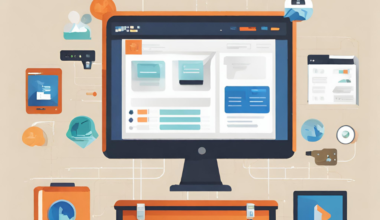In today’s rapidly evolving digital landscape, web development career trends are constantly shaping the way we create and interact with websites. As technology advances and user expectations continue to rise, staying updated with the latest trends becomes crucial for developers and businesses alike. In this article, we will delve into the hottest web development trends that are currently making waves and discuss what’s not as popular anymore.
-
Progressive Web Apps (PWAs): Bridging the Gap between Websites and Mobile Apps
One of the hottest trends in web development is the rise of Progressive Web Apps (PWAs). PWAs are web applications that provide a native app-like experience, combining the best features of both websites and mobile apps. They are designed to be fast, reliable, and engaging, allowing users to access them offline and receive push notifications. PWAs are gaining popularity due to their ability to deliver seamless experiences across multiple devices, eliminating the need for separate app development for different platforms.
-
Responsive Web Design: Mobile-First Approach for User-Centric Experiences
Responsive web design is not a new concept, but it remains an essential trend in the current digital landscape. With the majority of internet users accessing websites through mobile devices, adopting a mobile-first approach is crucial. Responsive web design ensures that websites automatically adapt to different screen sizes and resolutions, providing users with optimal viewing experiences. This trend focuses on creating user-centric designs that prioritize accessibility and usability across various devices.
-
Voice User Interface (VUI): Revolutionizing User Interaction
The increasing popularity of voice assistants like Siri, Alexa, and Google Assistant has brought Voice User Interface (VUI) to the forefront. VUI allows users to interact with websites and applications using voice commands. This trend is gaining traction as it offers a more natural and hands-free way of interacting with technology. Implementing voice search capabilities and voice-controlled navigation can enhance the user experience, making websites more accessible and convenient.
-
Artificial Intelligence (AI) and Machine Learning (ML): Powering Intelligent Web Solutions
AI and ML are revolutionizing web development by enabling intelligent and personalized user experiences. These technologies can analyze user behavior, preferences, and data to provide tailored content, recommendations, and automated processes. AI-powered chatbots and virtual assistants are also becoming popular for delivering real-time customer support and enhancing user engagement. Integrating AI and ML into web development projects can unlock new levels of efficiency, personalization, and automation.
-
Motion Design and Microinteractions: Engaging Users through Interactive Experiences
Motion design and microinteractions are key trends that add dynamism and interactivity to websites. Motion design involves the use of animations, transitions, and scrolling effects to create visually appealing and engaging experiences. Microinteractions, on the other hand, focus on small, subtle animations or responses that provide feedback to user actions. These trends captivate users’ attention, improve user engagement, and create memorable experiences.
What’s Not as Popular Anymore:
While certain trends continue to dominate the web development course landscape, some have become less prominent over time. For instance, Flash-based websites have significantly declined due to security concerns and the rise of more reliable and lightweight technologies like HTML5, CSS3, and JavaScript. Additionally, static and generic website designs have given way to more dynamic and visually appealing interfaces that capture users’ attention.
Conclusion:
In the ever-changing world of web development, staying updated with the latest trends is crucial to creating innovative and user-centric experiences. The trends discussed in this article, such as Progressive Web Apps, responsive design, voice interfaces, AI/ML integration, and motion design, are shaping the current digital landscape. By embracing these trends, developers and businesses can stay ahead of the curve and deliver exceptional web experiences to their users.





